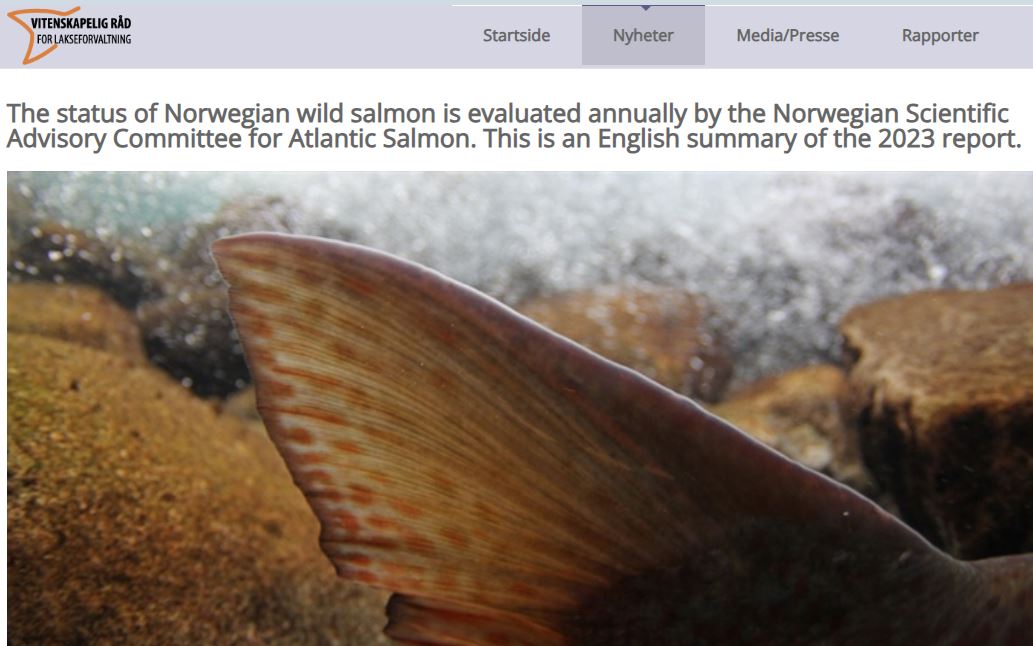 Á Sprengisandi á Bylgjunni er nú alþingismaðurinn Teitur Björn Einarsson að halda því fram að eldislax skaði ekki villtan lax. Svona málflutningur er óboðlegur og alþingismanninum til minnkunar. Þetta minnir á þegar talsmenn tóbaksiðnarins héldu því fram hér áður fyrr að reykingar væru hættulausar.
Á Sprengisandi á Bylgjunni er nú alþingismaðurinn Teitur Björn Einarsson að halda því fram að eldislax skaði ekki villtan lax. Svona málflutningur er óboðlegur og alþingismanninum til minnkunar. Þetta minnir á þegar talsmenn tóbaksiðnarins héldu því fram hér áður fyrr að reykingar væru hættulausar.
Hér er tilvitnun í nýjustu ársskýrslu norska vísindaráðsins, sem er skipað þrettán hlutlausum vísindamönnum:
„The largest population declines are seen in western and middle Norway, and negative impacts of salmon farming have contributed to this. Salmon lice, escaped farmed salmon, and infections related to salmon farming are the greatest anthropogenic threats to Norwegian wild salmon.“
Þetta getur ekki verið skýrara: Laxeldi er stærsta manngerða ógn við norskan villtan lax.
Sama gildir auðvitað hér og reyndar enn frekar því íslenskt sjókvíaeldi notar norskan eldislax en í Noregi er harðbannað að nota stofn sem er ekki af norsku kyni.
Úrdrátt úr skýrslunni má nalgast á vefsíðu Norska vísindaráðsins.
Aðalatriði hennar sem birt eru á síðunni draga upp dökka mynd:
Both the number of Atlantic salmon returning from the ocean to Norway for spawning, and the Atlantic salmon catches were among the lowest ever recorded in 2022 (based on a time series starting in 1980), but slightly higher than the record-low in 2021. The number of salmon returning from the ocean to Norway each year is now less than half of the level recorded in the 1980s. Still, the number of salmon spawning in the rivers has increased. The increased number of spawners despite reduced numbers returning from the ocean is due to reduced fisheries in the sea and rivers.
The reasons for the decline of Atlantic salmon are impacts of human activities in combination with a large-scale decline in the sea survival. The largest population declines are seen in western and middle Norway, and negative impacts of salmon farming have contributed to this. Salmon lice, escaped farmed salmon, and infections related to salmon farming are the greatest anthropogenic threats to Norwegian wild salmon. The present mitigation measures are insufficient to stabilize and reduce these threats. The knowledge on infections related to salmon farming is poor.
Hydropower production and other habitat alterations are also threats to salmon. There is an underexploited potential for improving conditions for salmon in regulated rivers. Invasive pink salmon is a new threat. In 2023, traps are installed in many rivers in Northern Norway, to hinder pink salmon in entering the rivers, but there is lack of knowledge on the effects of pink salmon on native salmonids, and on the efficiency of the implemented measures.
Climate change impacts Atlantic salmon populations negatively. Climate change increases the need to reduce the impacts of other threats to support the ability of Atlantic salmon to adapt to changing environments.
